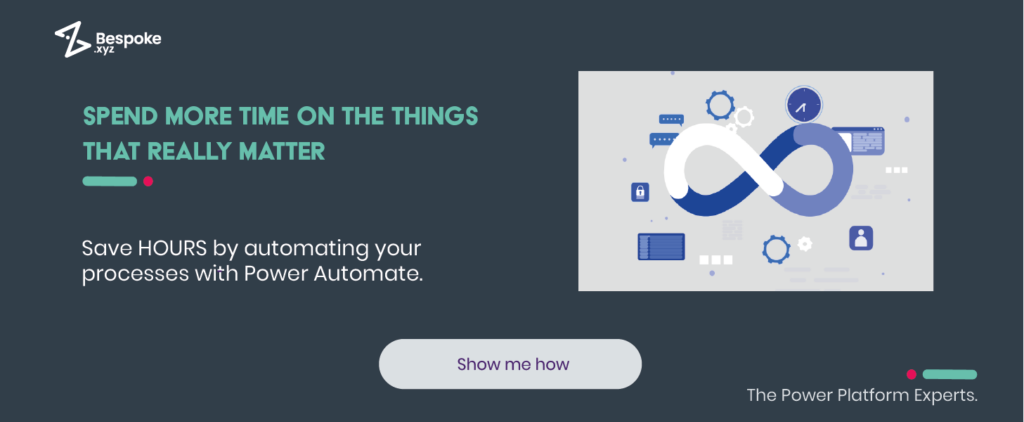Is your AP team tired of the invoice processing grind? The endless paper trails, the manual data entry errors, and the sluggish pace that seems to slow down the whole operation. Yep, we and many of our clients were too!
Until we decided to harness the power of Microsoft Power Platform to introduce automated invoice processing, streamlining and simplifying our entire workflow. This isn’t just about cutting out paper, it’s about transforming your workflow so that everything runs more smoothly and quickly.
In this blog, we’ll explore how automation can change the game for your invoice processing. We’ve also included a video that shows these tools in action, giving you a clear picture of how you can move from manual to modern with minimal fuss. Ready to streamline your processes and free up your AP teams’s time? Let’s dive in.
The Problem with Traditional Invoice Processing
Anyone who has worked in accounts payable knows the drill. Every day, invoices pile up – either physically on desks or digitally in inboxes. Each one needs attention: opening, checking, entering data manually into systems, and then chasing approvals.
It’s not just time-consuming – it’s ripe for errors. A misplaced decimal or a missed invoice can lead to massive headaches, from strained vendor relationships to inaccurate financial reporting, or worse… making the wrong payment.
The Cost of Inefficiency
Manual processing is more than just a hassle, it’s expensive. According to a not-so-recent study by Gartner, the cost of manually processing an invoice is around £15 in the UK, and in cases of errors or complex invoices, this can skyrocket to as much as £50 per invoice. Given the rise in minimum wage and salaries in recent years, these costs are likely now even higher than when the study was conducted.
Here’s a typical example in an office setting: management identifies a shortage in stationery items and sends a request to procurement to replace them.

This process involves numerous manual checks and validation points, each adding layers of labour that are both time-consuming and prone to error. Errors or exceptions might require parts of the process to be repeated, driving those costs up even further.
Automated Invoice Processing Using the Power Platform
By now, you’ve probably got the gist, that automated invoicing processing is the way forward. But you’re wondering how it all actually works. Here’s exactly how we’ve implemented it for ourselves and our clients:
- Instant Invoice Capture: By creating some smart Microsoft Outlook rules, the system will immediately identify the invoice when it lands in your email, typically as a PDF.
- Accurate Data Extraction: AI Builder extracts the essential information from each invoice – vendor details, payment terms, and more – and cross-verifies it against existing records to ensure accuracy.
- Efficient Workflow Management: After verification, the invoice moves through a customised workflow in Power Automate based on your company’s specific approval rules, managed effortlessly within Microsoft Teams.
Visualising and Managing the Process
- We build a real-time dashboard in Microsoft Power Apps, which allows you to track each invoice’s progress and manage approvals transparently.
Final Steps
- Secure Approval and Archiving: Approved invoices are automatically stored in SharePoint, ensuring they are safe and easily retrievable for compliance and auditing.
- Continuous Learning and Improvement: The AI systems learn from each transaction, continuously improving data accuracy and processing efficiency.
Check out our webinar below to see the full capabilities of automated invoice processing.
Benefits of using Power Platform for Automated Invoice Processing
For those of you who missed the video, here’s just a few of the benefits we highlighted:
- Cost-Effective: Reduce the average cost of processing an invoice from as high as £50 down to around £6.
- Time Savings: Drastically cut down on the time it takes to process each invoice.
- Increased Accuracy: Minimise human errors and ensure data integrity throughout the invoice processing cycle.
- Scalability: Power Automate grows with your business, handling increased invoice volumes without additional staffing needs.
- Adaptability: Easily adapts to various invoice formats and workflows as your business needs evolve.
- Enhanced Decision-Making with Microsoft Copilot Studio: This tool allows you to ask complex financial questions, get instant summaries, and make informed decisions quickly, enhancing the strategic use of data within your organisation.
Switching to automated invoice processing means not just catching up with technology but moving ahead. It frees up your team’s time for strategic work, reduces operational costs, and enhances overall operational efficiency.
Getting Started with Automation & AI
If your brain is already ticking about all the other possible Power Automate use cases for your organisation, here’s how you can get the ball rolling:
1. Take Stock of Your Tech
- Know Your Tools: Identify the systems handling your data, and make sure any new automation tech can play nice with them (Power Automate is a great option because it has tons of pre-made connectors, and you can create custom ones, meaning it works with just about any system.)
2. Spot the Bottlenecks
- Find the Slow Spots: Look for the parts in your processes that drag. Are errors creeping in too often? Is data entry slowing you down? These spots are prime candidates for a digital makeover.
- Identify Dependencies: Are there any tasks that fall apart when someone’s away? If your reporting grinds to a halt because key people are on leave, that’s a red flag for automation.
- Daily Grind: Pinpoint those repetitive daily tasks that are eating up your team’s time. Automation loves these routines, and so will your team when they’re freed up for more valuable work.
3. Trial Run
- Start Small, Think Big: Pick a manageable yet impactful process for a pilot automation project. This allows you to tweak and tune the process on a small scale before a full-blown launch.
- Learn and Adapt: Use this pilot as a critical learning curve to refine your approach before rolling out more broadly.
4. Get Expert Insights
- Ask for Help: Unsure where to begin? That’s what we’re here for. At Bespoke XYZ, we’re all about customising automation solutions that fit just right.
- Build Your Plan: Let’s map out your automation journey together. We can craft a strategy that not only fits your current needs but also scales for future growth.
Let’s Do This Together
Diving into automated invoice processing or any other process for that matter can seem a bit daunting, but hey, you’re not alone. Working with an automation consultant on our team will help guide you through each step, from the initial tech check to full-scale implementation.
So if you fancy making your invoice process faster, smarter, and more reliable, get in touch to speak with a Power Automate consultant today. Let’s make your business operations smoother than ever with a touch of automation magic.
Automated Invoice Processing using Power Automate FAQ
What happens if the automation process fails?
Even the best systems can encounter issues. If an invoice doesn’t process as expected, we have safeguards in place. This could mean sending an alert to resubmit the invoice or having it fall into a manual processing queue. Our systems are designed to handle exceptions smoothly and ensure continuity.
Can we integrate with tools outside of Microsoft?
Absolutely. The Power Platform supports a vast array of connectors that integrate with various modern business applications, not just Microsoft tools. If a direct connector isn’t available, custom connectors can usually be developed to link any necessary external applications via their APIs.
Are there additional licensing costs for Power Automate?
Basic automation capabilities may be included in your existing Microsoft 365 licenses, but more complex requirements might require additional licensing. It depends on the scale and scope of your automation. We work closely with our clients to map this out and ensure you only pay for what you need.
Can similar automation be applied to invoicing our clients (accounts receivable)?
Yes, the principles of automation apply to both inbound and outbound invoicing processes. The same tools and strategies can be adapted for generating and sending invoices to clients, ensuring consistency and reducing manual effort across all financial interactions.


